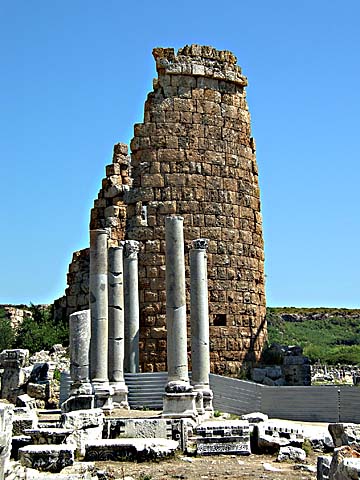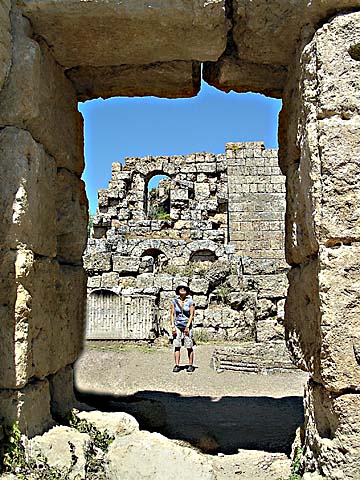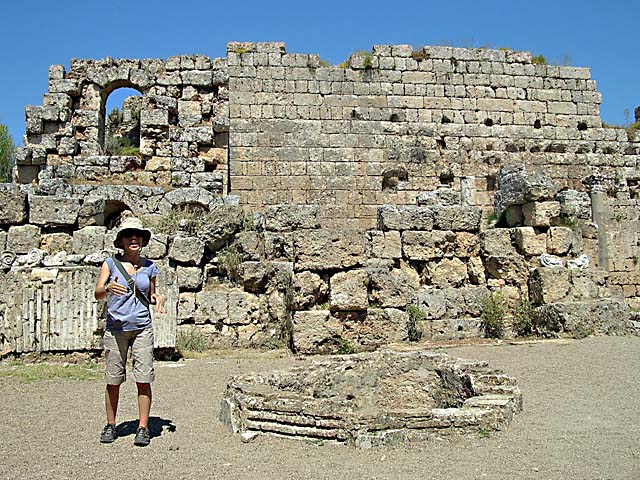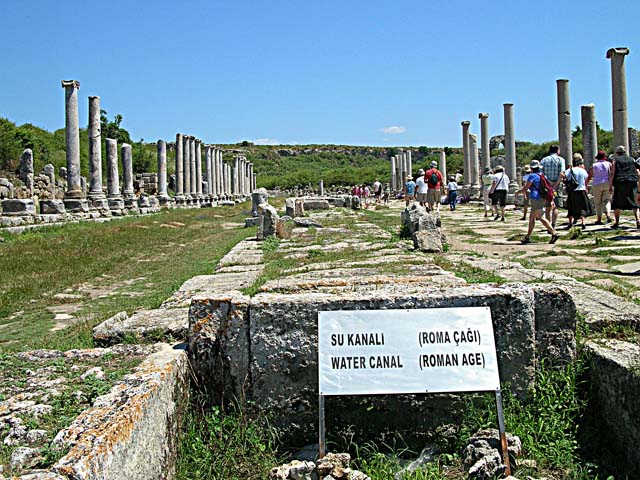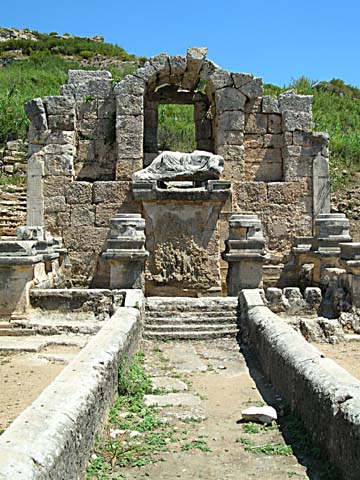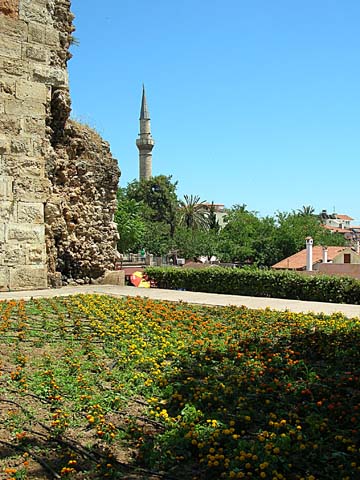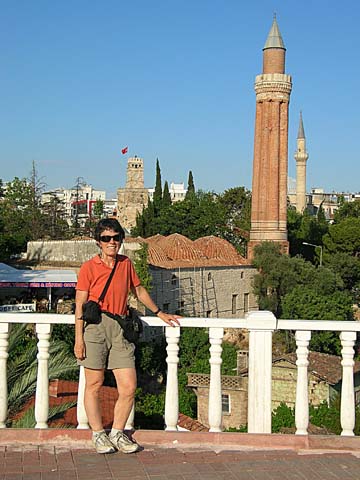TURKEY'S MAGICAL HIDEAWAYS
May 22 - June 7, 2009
Page 13
Driving from Cappadocia Area to Fethiye on the Mediterranean Sea
This Hellenistic gate in Perge dates back to the 3rd century BC and was designed to protect the city.
Rana standing in the Roman baths area. An amazing feature about The Baths Complex
in Perge apart from its frigidarium, tepidarium and caldarium are that its floors,
walls and basins were made of marble. Since marble was not available in Perge, it had to be
shipped from Marmara across the Marmara Sea.
In the twelfth century BC, there was a large wave of Greek migration from northern Anatolia (in modern day Turkey)
to the Mediterranean coast. Many settled in the area immediately east of modern-day Antalya, which came to be known as Pamphylia,
meaning "land of the tribes." Four great cities eventually rose to prominence in Pamphylia, including Perge and Aspendos.
Perge itself was founded in around 1000 BC. It was sited inland as a defensive measure in order to avoid the pirate
bands that terrorized this stretch of the Mediterranean. In 546 BC, Persians defeated the local powers and gained control of the
region. Two hundred years later, in 333 BC, the armies of Alexander the Great arrived in Perge during his war
of conquest against the Persians. The citizens of Perge sent out guides to lead his army into the city. Roman rule began in 188 BC,
and most of the surviving ruins today date from this period. After the collapse of the Roman Empire, Perge
remained inhabited until Seljuk Turk times, before being gradually abandoned.
An interesting feature in the Roman ruin of Perge is the Colonnaded Street that most probably served as a socializing place
for the inhabitants of Perge. The street extended from the Hellenistic gate to the Nymphaeum (fountain). Shops bordered
the street on both sides with broad roofed arcades, further there were statues of eminent citizens too.
There was a water canal lying in the very middle of the street that fulfilled the purpose of cooling the atmosphere.
The Nymphaeum (fountain) is a semicircular structure and dates from the reign of
Emperor Hadrian (130-150 AD). A statue of a river god was located in the center of this huge fountain.
Back in Antalya, now a premier resort area. Flower garden with minaret
in the background. The city was originally founded in 159 BC.
A cat nestled in the middle of the flower garden. Don't know if he thinks he's a flower.
Pat in front of the fluted minaret in Antalya, a 13th century minaret, which
has become the symbol of Antalya. The Clock Tower is also visible
to the left of the minaret. It was built in 1244 and marked the upper limit
of the old town. It was once part of the city's defensive system.
Link to next page of Drive to Fethiye - Page 14
Link to first page of Cappadocia - Page 6
Link to Page One of Turkey- Istanbul
Pat's Home Page
